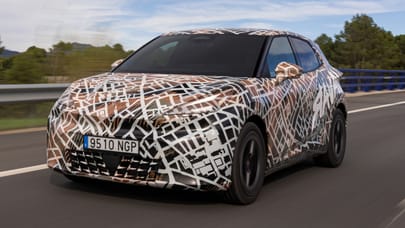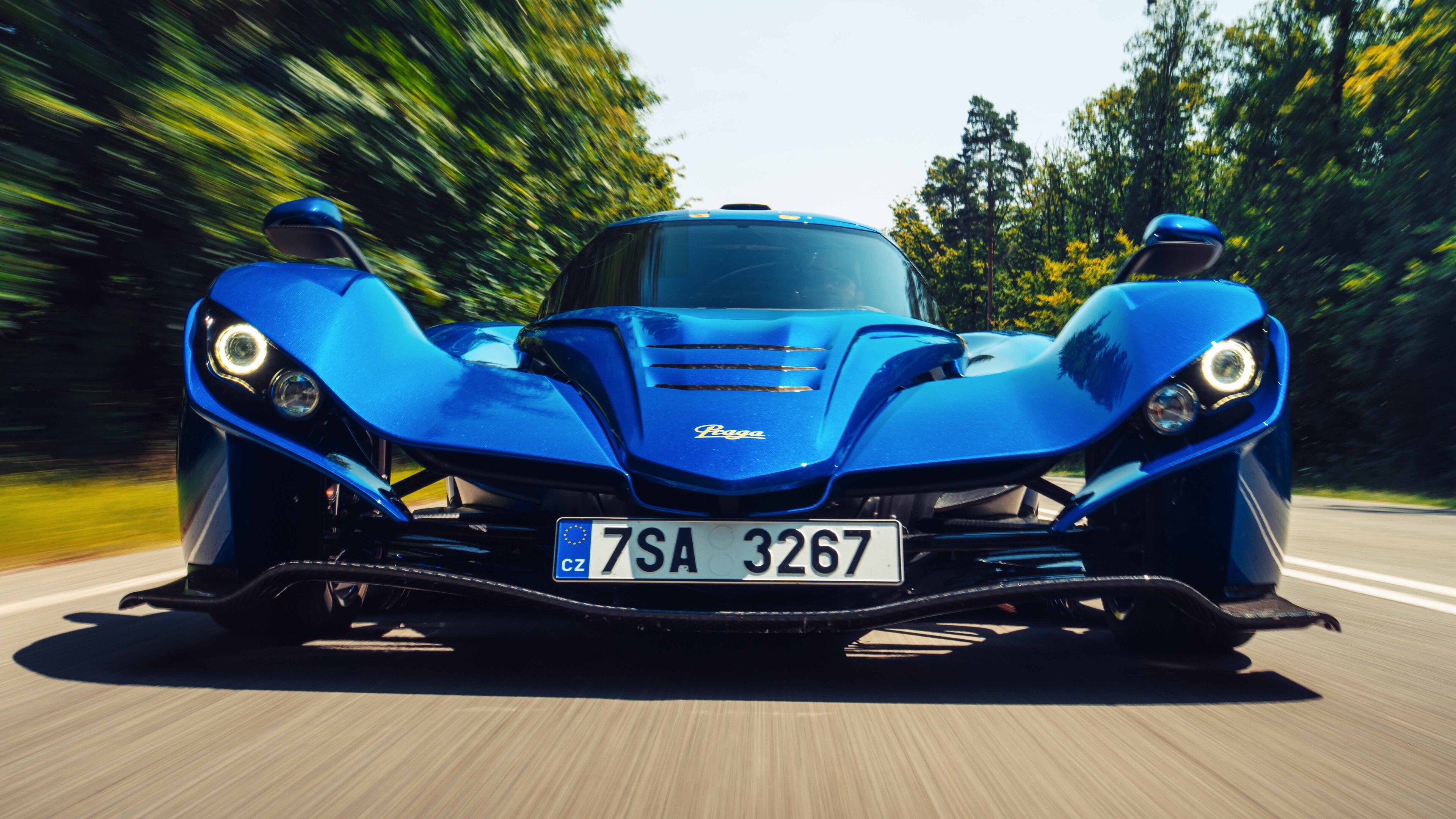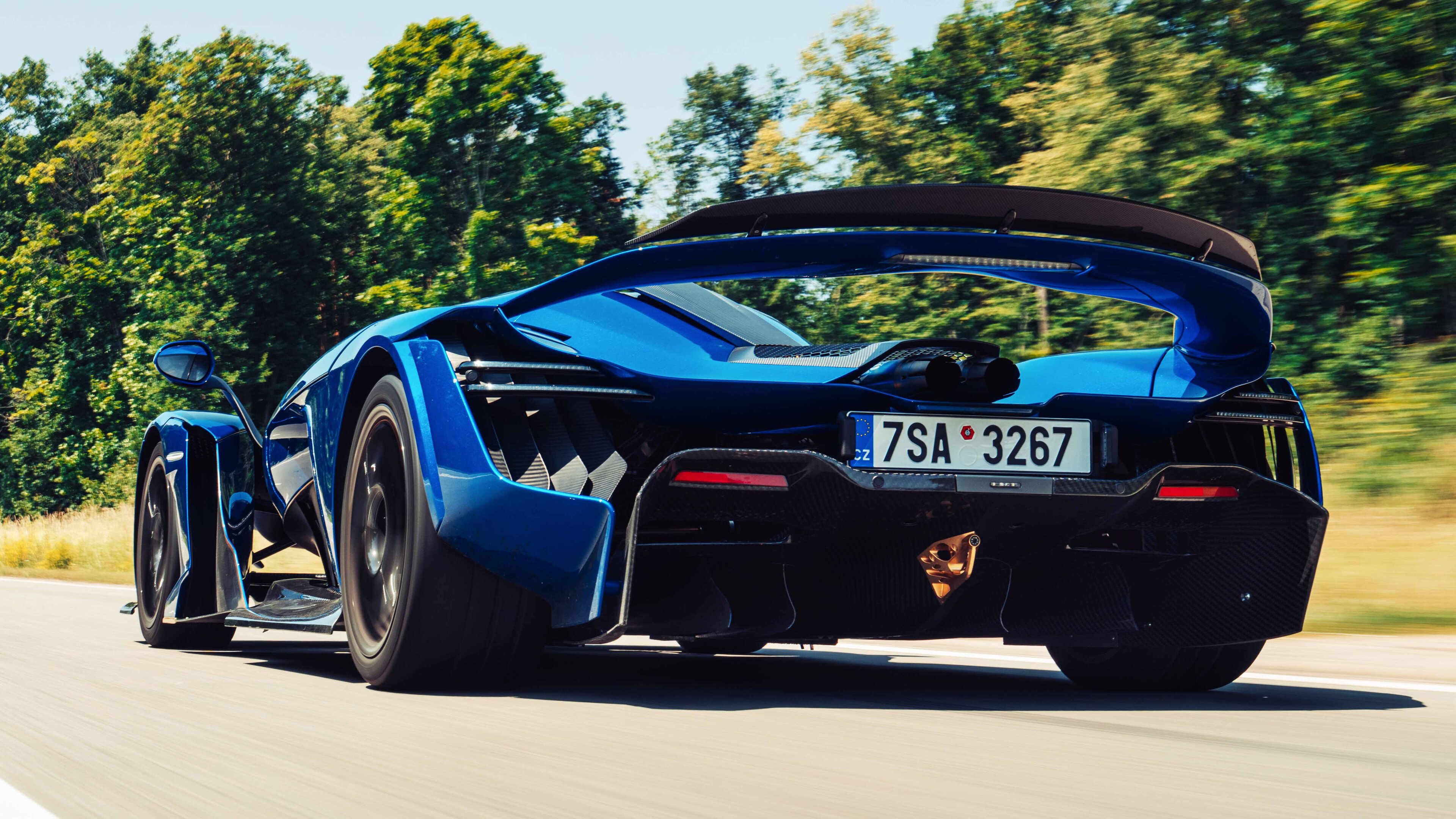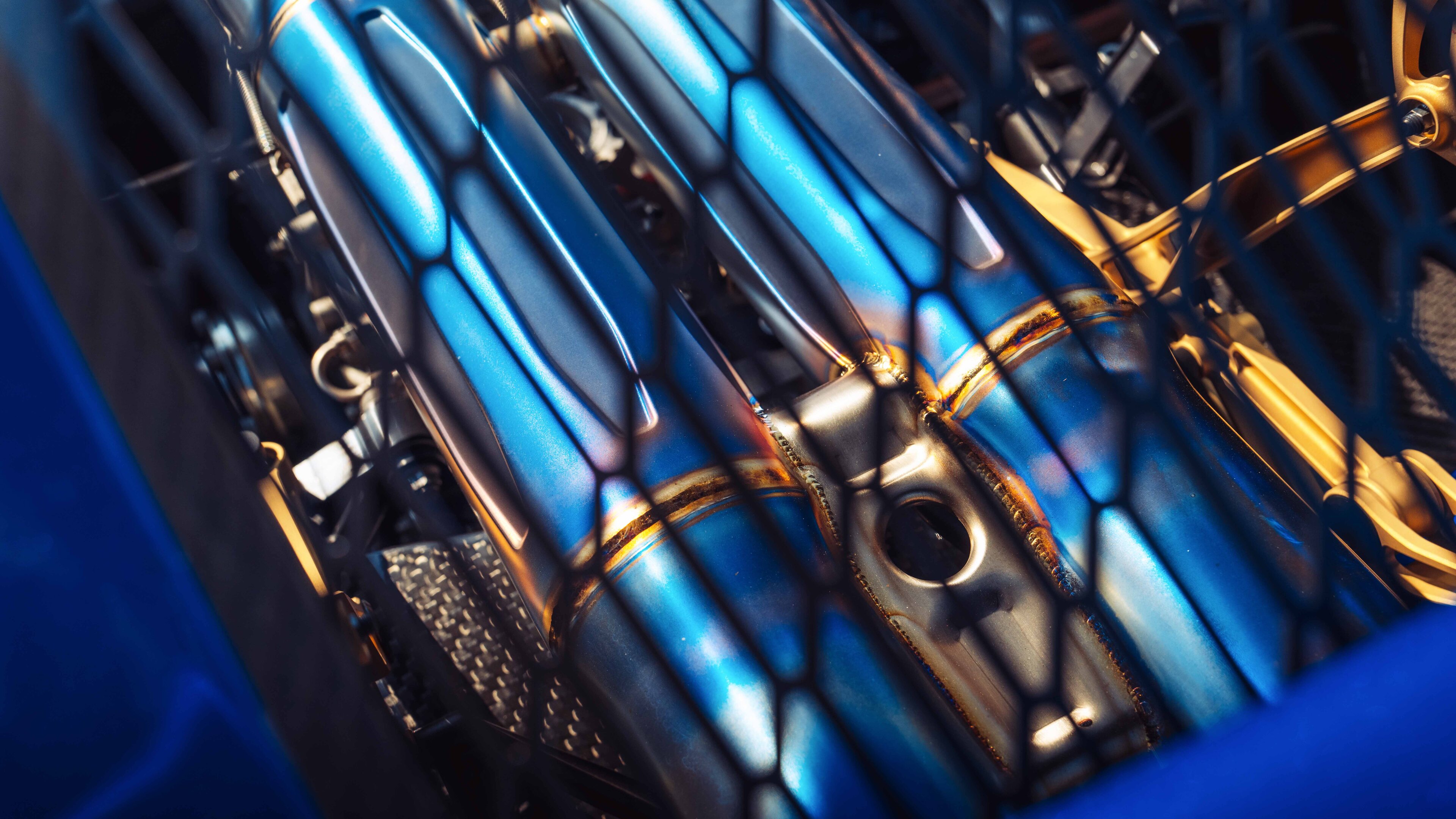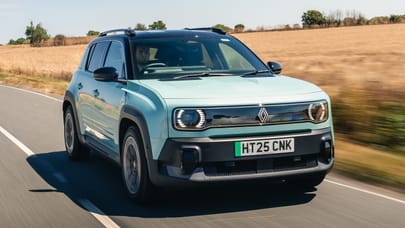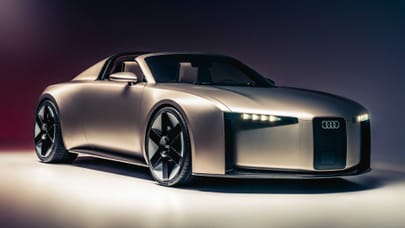
Smashing lap records in the 700bhp, track focused, 982kg Praga Bohema
Track car for the road, you say? Time to see if Praga’s claim for the Bohema is correct with a roadtrip... and some track driving
Cars usually drive around corners. This one hunts them. Like prey. And yet it hasn’t got a four figure horsepower figure, hybrid assistance or a slew of code telling comforting lies about your own ability. Instead, it is defined more by what it hasn’t got. And what it mostly hasn’t got is weight. Or cupholders. It’s a reminder of what it feels like to drive a car rather than pilot it, to emerge scratchy with adrenaline, with a vocabulary limited to percussive swear words. It is a road legal ‘track focused hypercar’ which dances on the edge of acceptability.
This is the Praga Bohema. And it is terrifyingly magnificent. It is not, however, a very good city car. Because the perfect car for both road and track is a myth. You’ll always be battered by compromise and bludgeoned by requirements. You’ll always look deranged in an Asda car park with a 5ft wing and canards, or nibbling your way through a rainstorm at 25mph on the latest barely there semi slick. And yet manufacturers keep trying. It’s bragging rights and ego. Has to be.
As you might have guessed just by looking at it, the Bohema does little to dispel the idea of perfect compromise. The roof is somewhere around knee level, the ‘doors’ more like flaps that unfurl from the sides of the narrow passenger cell. There’s a distinct flavour of Le Mans Prototype in the style and proportions, something expertly mixed with insectile and aerodynamic grace. It’s not traditionally pretty. But good God, does it turn heads.
Photography: Mark Riccioni
It also turns heads when you’re trying to get into it in the middle of Prague in front of the inevitable crowd. Sit on the sidepod, feed legs into the car and lower yourself down into a cabin that feels on the snug side of claustrophobia. Pop back out when you realise you need to remove the steering yoke, smile awkwardly at onlookers. Slide back. Five point harness on, prepare for launch. Realise you have the key in your pocket, undo harness, place key in the mount on the left hand side of the carbon tub, redo harness.
Then you press the ignition button in the roof, followed by the starter. A 700bhp VR38DETT – a Nissan R35 GT-R’s twin turbo V6 – tuned by UK company Litchfield flares instantly into life behind your head, sounding absolutely nothing like an R35 GT-R. And a Hewland six speed sequential with a single, throttle actuated clutch (or behind wheel hand clutch in racier modes) shakes, shivers and throbs somewhere in line with your hips. Engage first from the right hand paddle and it feels like someone has slammed a door just behind your head. You can’t see directly behind you, and your eyeline is roughly in line with a Transit van’s wheelnuts. Road car, my arse.
And yet... it’s not actually that bad once you get going. Vision going forwards is surprisingly good, the rearview mirrors set on aerodynamic spars far enough out that you can at least avoid nerfing stuff changing lanes. You can raise the cup of the seat, adjust the pedals and wheel, and the aircon blows cold. The inboard pushrod suspension has twin springs for split characteristics, with Öhlins damping for cushioning. Even with a snake belly ride height and on Prague’s medieval cobbles it’s not particularly friendly at slow speed – you need to balance that clutch from the throttle, it feels like it’s more of a ‘get you going’ mechanism than anything resembling an auto, and you need to change at 3,500rpm or above – but you manage.
To test the idea that the Bohema is as ‘practical’ a road car and as effective a track car as Praga claims, I’m going to drive it across the Czech Republic to three different racetracks – several hundred miles on road – and see if it can set a lap record at each. Which sounds... ambitious.
We’re in Prague because this is where Czech company Praga is based, heading out to Autodrom Most. A fun little circuit about an hour away, covered easily via back roads and a little blast of motorway. And the Bohema is taut, ultra direct and committed, but never angry or obnoxious. But one thing is really very obvious from the start – this thing feels like it’s made of cobwebs and happy thoughts. It weighs under a tonne in basic format (982kg), an ode to lightweighting, carbon tubs and woven bodywork. That grumpy Hewland is some 70kg lighter than a double clutch, every nut, bolt and idea throughly pared.
The first time you give it death, you’ll bark out a laugh of surprise, because this thing doesn’t batter physics, it slips past them, cuts the air with enough venom to make it bleed. I’d forgotten this. How weight affects everything to do with a car, and it’s not enough to anaesthetise the pain away with more power. It doesn’t take long to get to Most, and it’s a slight haze, there’s a lot to process, but mostly that the Bohema isn’t actually a desperate road car despite the first impression. That isn’t the point. The track is the point. Let loose on Most for the first time, those impressions become sharper than wit.
Top Gear
Newsletter
Thank you for subscribing to our newsletter. Look out for your regular round-up of news, reviews and offers in your inbox.
Get all the latest news, reviews and exclusives, direct to your inbox.
The unfamiliarity comes not in the acceleration – though that will make you cough a bit – but in the bit between brake and turn in. These days, we’re so used to managing a heavy car through a corner, or leaning on digital mysticism for torque vectoring and traction control, that we forget what an utter joy it is to just attack a corner with tyre grip and fleshy sensors. Bypass the algorithms and use your fingertips, inner ear and bottom to figure out where the line between successful corner exit and Armco splatter lies. If you keep your eyes up and pointing where you want to go, you can sling the Bohema at a corner and make one smart steering input. Feed in the power and find that huff of boost in the middle of the rev range and you can edge the car tighter or longer on exit depending on where you want it, making you laugh even as it drowns you in sensation.
It’s really good at long fast corners, a conductor of the orchestra of physics at work. The gearbox suddenly makes sense, smashing upchanges and deleting gears deep in the brakes like it bears a grudge, the engine hoarse and guttural. It loses speed like it’s in a video game. As a driving experience, this is Mötörhead, stadium volume.
It’s also on those longer, drawn out corners that aero comes into play. Loads of cars make big claims about hundreds of kilos of invisible aerodynamic weight, but they tend to invoke these unicorn forces at speeds you’re unlikely to get to, even on a track. The Bohema makes a greater proportion of its kerbweight in downforce (950kg) at 155mph. Which isn’t actually that fast. As it turns out, the Bohema is not hard to drive very quickly indeed, but to get it exactly right... to squeeze every last drop from this car, you need to up your skills game. It’s for the kind of person who likes their challenges raw, but sympathetic.
But with a car apparently capable of matching GT3 and Cup cars in terms of laptimes, I need some help. So I pass the Bohema over to Praga’s test driver Aleš Jirásek to see if he can break a record. We drop the car’s ride height a little – you can literally do it yourself with a pair of spanners and a ruler in about half an hour – pop off the numberplates (which are quick release, with little magnetic chargers to keep the lights on) and we’re good to go. Time to beat for a road legal car is 1:39.91 set by the inevitable Porsche GT3 RS.
A warm up lap, two hot laps and a cool down, and the results are violent. The Bohema lapped Most in 1:35.12. Some four seconds faster than the RS on the same Michelin Cup 2 R tyres. Not just inched the win, but on a completely different page of the map. Jirásek reckons there’s more – seconds more – but he hasn’t been to Most in a while, and the car isn’t set up specifically for the circuit, just a down ’n’ dirty slam by an engineering incompetent journalist.
But that’s just the start. So we raise the ride height, and I set off on real roads, on the same tyres, barely scuffed, to Brno circuit. And the next record attempt. On the way, we catch the 1000 Czechoslovak Miles rally the next day, share the road with myriad carefully curated old timers, including venerable Pragas, and the vibes are immaculate. But Brno beckons, and it’s a complicated one. The track itself is big and wide (it’s known locally as ‘The Highway’), contorted with elevation changes and commitment-tastic corners. I track around it hopelessly off line and become brave only on the straights, the Praga giving me the kind of mechanical side eye that could strip paint.
We repeat the previous track prep process (height and numberplates), and send Aleš off for some hot laps. The results are similarly eye widening. The previous lap record is held again by a roadgoing GT3 RS, this time at 2:08.70. The Bohema laps Brno in 2:01.67 . Which goes to show exactly how monstrous this thing is. That’s two.
Three is Slovakia Ring. And more road miles and another night. On the same set of tyres. And one thing becomes painfully clear; this is a car that is deliberate and completely self aware. Praga knows this car isn’t for everyone, and so it’s not so much a racecar for the road as a racecar capable of being driven on the road. I drove it through towns and villages and McDonald’s car parks, on cobbles and unfinished roads – and though careful, and aware that it has the turning circle of a suburb, it wasn’t absolutely painful. The ride is hard, but still suspends with distinct mercy even given the limited amount of spring and damper travel.
You get used to the entry/egress issue, gaining grace with familiarity, popping the key into its recess in the tub before entry to leave both hands free. Once in, you plop your phone into the holder atop the central column – very Dacia Duster – and plug it into the USB hidden behind, an always updated nav that stays updated and weighs grammes. There’s a pocket by your left thigh for a wallet, easily changed mirrors, a bottle/flask holder behind your head in the central spine that can also be used to house a Bose bluetooth speaker. And yes, you’d be able to hear it. This isn’t a car that’s too loud to drive without ear protection even at full chat. Yes, it’s noisy, and yes it’s vibratory, but it’s not uncomfortable.
Praga decided to suspend the engine on its own set of bushings so that the motor (if it were a stressed member) didn’t use the carbon cabin as a subwoofer and try to turn people’s ears inside out, and it works to make it a usable roadcar. OK, so the Hewland is a bit of a truculent piece of engineering at slow speed, but that’s what thoroughbreds do when asked to join pony club. But this is a car that doesn’t need a team of engineers to start it, hasn’t got a 45 second fire up procedure, doesn’t wear you out with basic theatrics and has a pair of 50-ish litre luggage bags in the sidepods. You just get in it and go. And try to kick the bejeezus out of it.
This might be a car of carbon fibre and mathematics wrapped around a small bundle of explosions, but the experience is anti-digital. Live in it and it feels more like blood, bone and brass than code and computers cleverer than you, an ode to old school power to weight, with new school sensibilities. It becomes a badge of honour of sorts. You have to learn to drive a Bohema well, and that goes from balancing the throttle at slow speeds, to being able to reverse it as much as eking out a hardcore lap time. Where hypercars are as easy to drive as your gran’s hatchback, there’s something entirely satisfying in having to learn stuff.
It’s a committed track killer that is usable on the road, not contorted by excess faff, or joy killing discomfort
Of course, it isn’t perfect. On the road, it’s... a lot. It’s fidgety and uncompromising. The gearbox will hang downchanges if you’re off throttle, and the immediacy robs you of time off at any point, unless the road is billiard table smooth. It’ll get skippy under heavy braking over bumps, the steering so immediate that a decent sneeze will see you upside down and on fire. On the track, it’s immense, but again, without pause. At first, it feels like you don’t so much drive this car as survive it. Later there is satisfaction. Which is kind of the point.
What remains is one final challenge – the mighty Slovakia Ring. Now, for transparency, this is Praga’s test track, so there was full confidence that a record could be won... because the Bohema already holds the record with a 2:03.60. The next best – a GT3 RS again – clocked in at the low 2:10s. Confidence was high. Until it wasn’t. Limited time, many cameras to be set and rushing, and someone didn’t quite close the rear clamshell. Aleš’s helmet obscured the warning light and once on the 175mph warm up lap, the rear bonnet popped open with the force of a small explosion, casually ripping the back of the car off. Cue controlled panic.
Extra track time was booked, and a rear clamshell rammed into the back of a van and sent. Then five hours of waiting. And wondering. But once the unpainted carbon spare was bolted into place, the car was ready to try again, bruised, battered and war torn, but serviceable. One warm up lap and Aleš was racing driver uncompromising, clocking a 2:03.45, and beating his own record. The sighs of relief sucked most of the oxygen from the pitlane, and the cheers forced it all back.
So what have we learned? Well, the Bohema’s success is not that it tries to be all things to all people, but in the fact that it very much doesn’t. It’s a committed track killer that is usable on the road, not contorted by excess faff, or joy killing discomfort. On road tyres it will beat anything on track this side of a slick shod racecar – and we used the same set of Michelin Cup 2 Rs for the whole trip, lending credence to the idea that light weight is an all encompassing advantage. They looked a bit battered by the end, but you can’t argue with the results.
The Bohema is niche, expensive, and deliriously fun. But despite the looks and price, it really does have a place. It turns out that a road legal racing car really does exist, because the Praga Bohema is not a myth. In fact, it’s fast becoming a legend.





